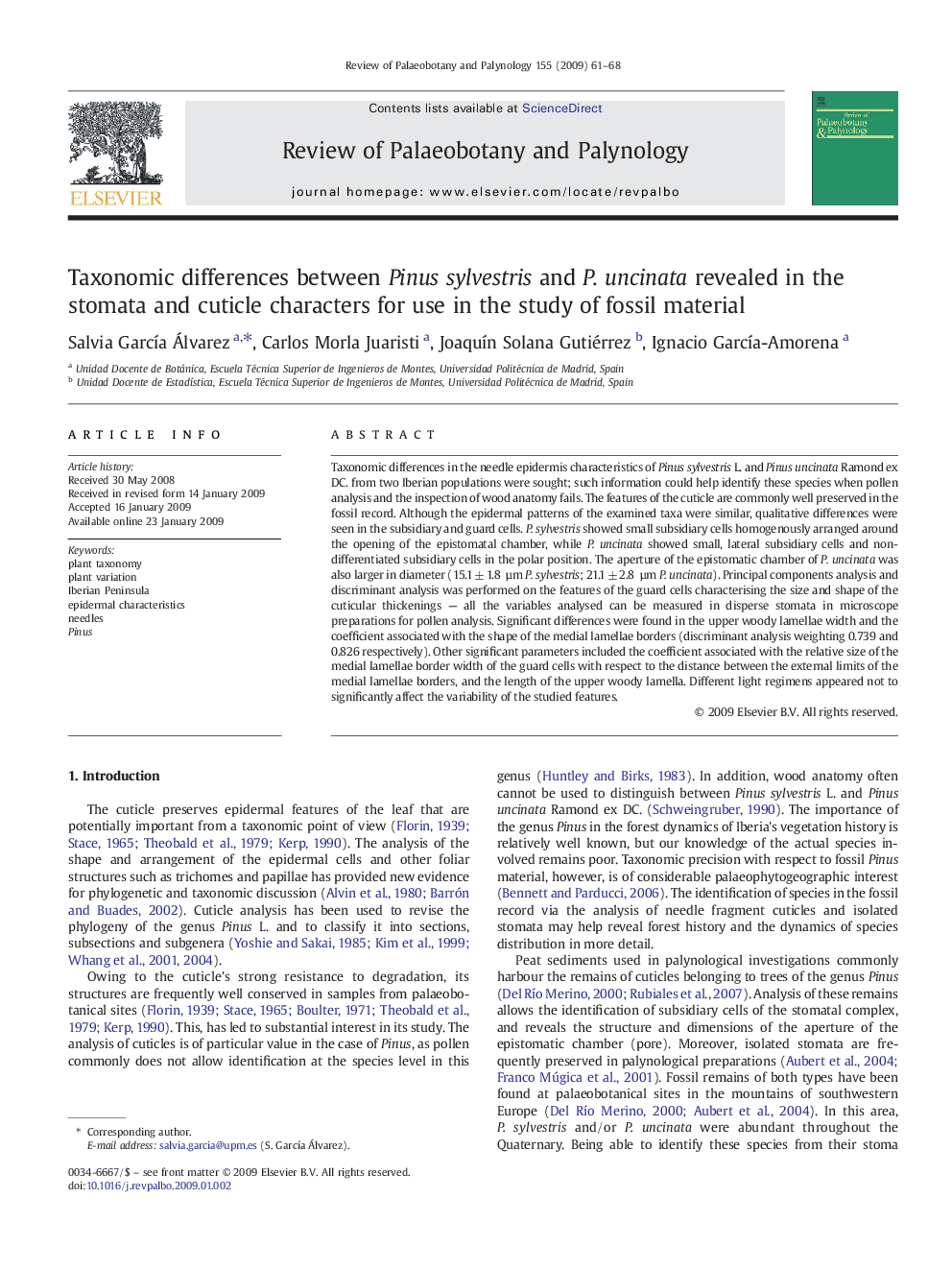| Article ID | Journal | Published Year | Pages | File Type |
|---|---|---|---|---|
| 4751064 | Review of Palaeobotany and Palynology | 2009 | 8 Pages |
Abstract
Taxonomic differences in the needle epidermis characteristics of Pinus sylvestris L. and Pinus uncinata Ramond ex DC. from two Iberian populations were sought; such information could help identify these species when pollen analysis and the inspection of wood anatomy fails. The features of the cuticle are commonly well preserved in the fossil record. Although the epidermal patterns of the examined taxa were similar, qualitative differences were seen in the subsidiary and guard cells. P. sylvestris showed small subsidiary cells homogenously arranged around the opening of the epistomatal chamber, while P. uncinata showed small, lateral subsidiary cells and non-differentiated subsidiary cells in the polar position. The aperture of the epistomatic chamber of P. uncinata was also larger in diameter (15.1 ± 1.8 µm P. sylvestris; 21.1 ± 2.8 µm P. uncinata). Principal components analysis and discriminant analysis was performed on the features of the guard cells characterising the size and shape of the cuticular thickenings - all the variables analysed can be measured in disperse stomata in microscope preparations for pollen analysis. Significant differences were found in the upper woody lamellae width and the coefficient associated with the shape of the medial lamellae borders (discriminant analysis weighting 0.739 and 0.826 respectively). Other significant parameters included the coefficient associated with the relative size of the medial lamellae border width of the guard cells with respect to the distance between the external limits of the medial lamellae borders, and the length of the upper woody lamella. Different light regimens appeared not to significantly affect the variability of the studied features.
Related Topics
Physical Sciences and Engineering
Earth and Planetary Sciences
Palaeontology
Authors
Salvia GarcÃa Álvarez, Carlos Morla Juaristi, JoaquÃn Solana Gutiérrez, Ignacio GarcÃa-Amorena,
